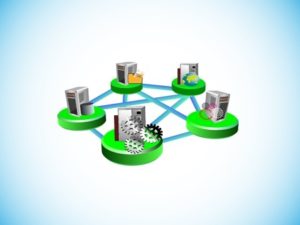Four Options For Integrating with NetSuite OpenAir
The challenge with multiple systems in an organization is they can create silos of information, where each system requires redundant information entry. Silos of information can create the perception of unreliable information and inefficient processes within your organization. Integrating systems can create a harmonious and cohesive overall solution where data is accurate and timely.
NetSuite OpenAir, as a Professional Services Automation solution, is a prime candidate for integrating to other systems as there is data overlap between business units. There are generally four ways to build integrations to NetSuite OpenAir, each with pros/cons and specific application based on your IT environment and data workflow needs.

- NetSuite To/From OpenAir Integration
- Integration Manager
- OpenAir API
- Third-Party Tools
If you are a NetSuite ERP user, there are direct integrations with OpenAir controlled via the OpenAir UI. The user interface has standard data flows between the systems but also supports custom scripting for additional field control. You can schedule the NetSuite/OpenAir integration to run up to six times a day, currently. After each run, integration results can be mailed to a particular administrator to review errors or exceptions that may need reconciliation. There are many types of data that can be transferred between the systems, but some of the more significant types are expenses, invoices, projects, and users.
OpenAir’s Integration Manager (IM), also known as OpenAir Connect (OA Connect), is used primarily for batch file processing. IM is a database export/import tool that uses field mapping and text files to connect to the OpenAir database. IM will export out of OpenAir, producing a text file in a specified location per IM configuration. To import with IM, a .csv file format is required along with a field level mapping of the file into a specific database table within OpenAir. Integration Manager is the quickest and least expensive approach to integrations with OpenAir.
OpenAir provides XML and SOAP interfaces that can provide near real-time processing. These interfaces will allow OpenAir to integrate with other systems and requires full custom programming. API integration provides flexibility to extract or import data directly with OpenAir’s database. To use the APIs, you have to develop an infrastructure for error handling, retries, etc., and use a language that allows you to create, send and receive XML files. API Integration is the most flexible and will allow you to reach beyond what IM can do, as long as you have someone who is skilled in using the API interface properly.
The last integration option is third-party integration tools available to the OpenAir community. One TOP Step Consulting often uses is Dell Boomi. It allows direct interaction with both NetSuite OpenAir and other supported systems with table mapping using cloud connectors called Atomspheres. Typically third-party tools provide connectors or (APIs) for the specific system you want to share information with and the ability to map your data between the systems.
Disparate systems should no longer be a roadblock to business efficiencies when there are multiple integration options available. Sharing information between your NetSuite OpenAir system and other core systems such as CRM and ERP systems is important to your professional services organization and requires an understanding your data ownership and business workflows for effective implementation. TOP Step Consulting has helped customers implement best-fit integrations based on their workflow and data availability requirements with all of these forms of integrations. Learn more about our integration services on our website.
